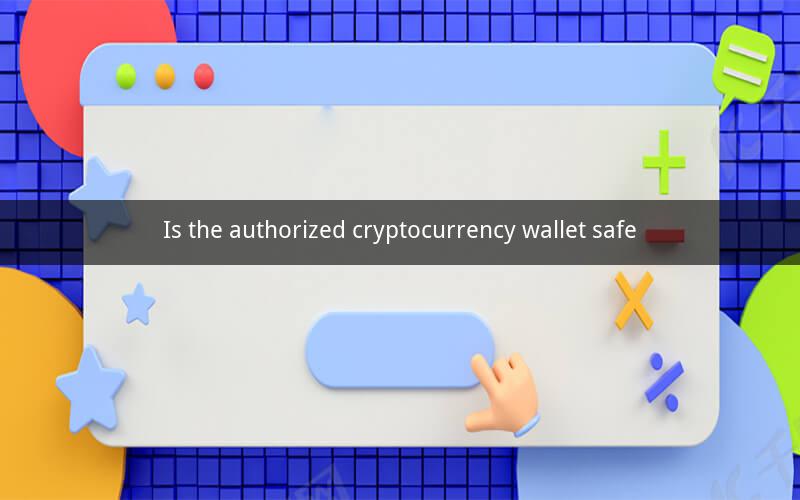
Table of Contents
1. Introduction to Cryptocurrency Wallets
2. Types of Cryptocurrency Wallets
3. Security Features of Cryptocurrency Wallets
4. Common Threats to Cryptocurrency Wallets
5. Best Practices for Safe Cryptocurrency Wallet Usage
6. The Role of Authentication in Wallet Security
7. Regular Updates and Maintenance
8. The Importance of Backup and Recovery
9. Choosing a Reliable Cryptocurrency Wallet Provider
10. Conclusion
---
1. Introduction to Cryptocurrency Wallets
Cryptocurrency wallets are digital tools used to store, send, and receive cryptocurrencies. They come in various forms, from software applications to hardware devices, each with its own set of features and security measures. With the rise of digital currencies, ensuring the safety of these wallets has become a paramount concern for users.
2. Types of Cryptocurrency Wallets
a. Mobile Wallets: These are applications installed on smartphones and tablets. They are convenient for day-to-day transactions but may be less secure due to the vulnerability of mobile devices to hacking.
b. Desktop Wallets: Installed on personal computers, these wallets offer more control and security than mobile wallets but require a higher level of technical expertise.
c. Web Wallets: Accessed through a web browser, these wallets are convenient but can be vulnerable to online attacks if the user's computer is infected with malware.
d. Hardware Wallets: Physical devices that store private keys offline, making them extremely secure against online threats.
e. Paper Wallets: A piece of paper containing the private and public keys. While highly secure, they can be damaged or lost.
3. Security Features of Cryptocurrency Wallets
a. Encryption: Wallets use encryption to protect private keys, making them unreadable to unauthorized users.
b. Multi-Factor Authentication (MFA): This adds an extra layer of security by requiring more than one method of verification to access the wallet.
c. Cold Storage: Storing cryptocurrencies offline in cold storage wallets reduces the risk of online hacking.
d. Backup: Regularly backing up the wallet ensures that the user can recover their funds in case of loss or damage.
4. Common Threats to Cryptocurrency Wallets
a. Phishing: Scammers create fake wallet login pages to steal private keys and funds.
b. Malware: Malicious software can infect computers and smartphones, allowing hackers to steal private keys.
c. Man-in-the-Middle (MitM) Attacks: Hackers intercept communications between the user and the wallet, gaining access to sensitive information.
d. Physical Theft: If a hardware wallet is stolen, the thief can gain access to the stored cryptocurrencies.
5. Best Practices for Safe Cryptocurrency Wallet Usage
a. Use Strong Passwords: Create strong, unique passwords for each wallet and avoid using common phrases or easily guessable information.
b. Enable Two-Factor Authentication: This adds an extra layer of security to prevent unauthorized access.
c. Keep Software Updated: Regularly update the wallet software to ensure it has the latest security features.
d. Backup Regularly: Create backups of the wallet and store them in multiple secure locations.
e. Be Wary of Phishing Attempts: Never click on suspicious links or provide private keys to anyone.
6. The Role of Authentication in Wallet Security
Authentication is crucial in ensuring that only the rightful owner can access the wallet. MFA, biometric authentication, and other advanced authentication methods provide an additional layer of security.
7. Regular Updates and Maintenance
Regular updates to the wallet software help to patch security vulnerabilities and ensure that the wallet remains secure against new threats.
8. The Importance of Backup and Recovery
Creating backups of the wallet is essential for recovery in case of loss or damage. These backups should be stored securely and kept up to date.
9. Choosing a Reliable Cryptocurrency Wallet Provider
Selecting a reputable wallet provider is crucial for ensuring the safety of your funds. Look for providers with a strong track record of security and reliability.
10. Conclusion
While cryptocurrency wallets offer a convenient and secure way to store and manage digital currencies, it is essential to understand the risks and take appropriate measures to protect your assets. By following best practices and staying informed about wallet security, users can enjoy the benefits of cryptocurrency without compromising their financial safety.
---
Questions and Answers
1. What is the primary purpose of a cryptocurrency wallet?
- A cryptocurrency wallet is used to store, send, and receive digital currencies.
2. How do mobile wallets differ from desktop wallets in terms of security?
- Mobile wallets are more vulnerable to hacking due to the higher risk of mobile devices being infected with malware.
3. What is the difference between hot and cold storage in cryptocurrency wallets?
- Hot storage refers to wallets connected to the internet, while cold storage involves storing cryptocurrencies offline.
4. How can a user protect their cryptocurrency wallet from phishing attacks?
- Users should be cautious of suspicious links and never provide their private keys to anyone.
5. What is the importance of regular updates to wallet software?
- Regular updates ensure that the wallet has the latest security features and patches for vulnerabilities.
6. How can users create a strong password for their cryptocurrency wallet?
- Users should create long, complex passwords with a mix of letters, numbers, and special characters.
7. What should users do if they suspect their cryptocurrency wallet has been compromised?
- Users should immediately change their password, enable two-factor authentication, and contact the wallet provider.
8. How can users backup their cryptocurrency wallet safely?
- Users should create backups on multiple secure devices and store them in different locations.
9. What are some signs that a cryptocurrency wallet provider may not be reliable?
- Lack of transparency, poor security measures, and negative reviews are signs of an unreliable provider.
10. How can users stay informed about the latest threats to cryptocurrency wallets?
- Users can stay informed by following reputable cryptocurrency news sources and wallet providers' security bulletins.